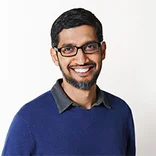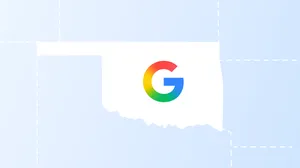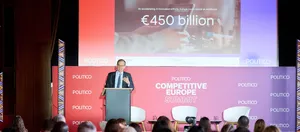Sundar Pichai’s testimony before the U.S. House Committee on Energy & Commerce
Editor’s Note: Today our CEO Sundar Pichai testified along with the CEOs of Facebook and Twitter at a hearing hosted by the U.S. House Committee on Energy and Commerce focused on social media’s role in promoting misinformation. In his opening written statement, Sundar highlighted Google and YouTube’s efforts to provide trustworthy content and opportunities for free expression across our platforms, while combating harmful misinformation around the U.S. 2020 elections, the COVID-19 pandemic and more. Read it in full below.
Chairman Doyle, Ranking Member Latta, Chairwoman Schakowsky, Ranking Member Bilirakis, Full Committee Chair Pallone and Full Committee Ranking Member McMorris Rodgers, thank you for the opportunity to appear before you today.
This month, the worldwide web turned 32. Over the past three decades, we’ve seen the web inspire the best in society, by expanding knowledge, powering businesses, and providing opportunities for expression, discovery, and connection — no matter who you are, or where you live.
I joined Google in 2004 because I believed the internet was the best way to bring the benefits of technology to more people, and I believe that still today.
I am proud that Americans can turn to Google for help in moments that matter, whether they’re looking for COVID vaccine information on Search and Maps, working and learning from home using Google Workspace or Google Classroom, learning new skills on YouTube, or using our digital tools to grow their businesses. In 2020, our products helped 2 million U.S. businesses, publishers, and others generate $426 billion in economic activity. And we helped billions of people find comfort and connection in an otherwise awful year.
Beyond our products, we were proud to announce last week our plans to invest over $7 billion in data centers and offices across 19 states, and create at least 10,000 full-time Google jobs in the U.S. That’s in addition to the 84,000 employees we currently employ across the country. And according to an Oxford Economics report, YouTube's creative ecosystem supported the equivalent of 345,000 full time jobs in 2019.
We are energized by the opportunity to help people at scale, and we are humbled by the responsibility that comes with it. We have thousands of people focused on everything from cyber attacks, to data privacy, to today’s topic: misinformation.
Our mission at Google is to organize the world’s information and make it universally accessible and useful. Core to that mission is providing trustworthy content and opportunities for free expression across our platforms, while limiting the reach of harmful misinformation.
It’s a large, dynamic challenge without easy answers. More than 500 hours of video are uploaded to YouTube every minute, and approximately 15% of the searches on Google each day are new to us. Eighteen months ago most people hadn’t heard of COVID-19; sadly, coronavirus was the top trending search of 2020.
Responding to the events of January 6
Staying ahead of these challenges and keeping users safe and secure on our platforms is a top priority. We saw how high those stakes can be on January 6, 2021, when a mob stormed the U.S. Capitol. This was an unprecedented and tragic event, and Google strongly condemns these violent attacks on our democracy, and mourns the lives lost.
In response, our teams worked to raise up authoritative news sources across our products. Teams at YouTube quickly took down any live streams or videos that violated our incitement to violence policies, and on January 7, we began issuing strikes to those in violation of our presidential election integrity policy. In the Play Store, we removed apps for violating our policies on inciting violence. We also prohibited advertisers from running ads that referenced the 2020 election or topics related to the Capitol riots in the scope of our Sensitive Events policy.
Doing our part to contribute to the integrity of the U.S. 2020 election
We were able to act quickly because of the investments we made to prepare for the 2020 elections. Last year, teams across Google and YouTube worked around the clock to contribute to election preparedness, by helping voters find authoritative information about the election; by working with campaigns to equip them with best-in-class security features and helping them connect with voters; and by protecting our platforms from abuse.
Helping voters find authoritative information on our services
This U.S. election cycle saw all-time highs in searches on Google for civics-related topics. Anticipating that need, we worked to launch features that would help people find the information to participate in the democratic process, including how to register and how to vote in their states.
Consistent with our approach to prior election cycles, we showed “how to register” and “how to vote” reminders to all our U.S. users directly on Google Search, Maps and YouTube. These reminders were seen over 2 billion times across our products. As the election neared, we helped people find polling and ballot drop off locations: From mid-October through Election Day, we added more than 125,000 voting locations in Google Maps. Across our products, these features were seen nearly 500 million times.
Finally, starting on Election Day, we worked with the Associated Press to provide real-time election results for relevant searches on Google. These results had over six times more views in 2020 than in 2016. Similarly, on YouTube, we launched an election results information panel that showed on top of search results and under videos with election-related content. It pointed to our election results page on Google, and over time, we expanded it to include an additional link pointing to a page on the U.S. Cybersecurity and Infrastructure Security Agency (CISA) website that debunked incorrect claims made about the integrity of the elections. Once the safe harbor deadline for state certification passed, we updated this YouTube Election Results Information Panel again to point to the National Archives Office of the Federal Register page of record for the 2020 electoral college vote. Collectively, our election information panels on YouTube have been shown over 8 billion times.
Working with campaigns
We also helped campaigns and elected officials effectively use Google and YouTube products to reach voters and enhance their election security. As part of our Civics Outreach Virtual Training Series, Google held 21 training sessions for over 900 candidates, campaigns, public officials, and nonprofit leaders. Overall, we held 45 group and individual trainings to help more than 2,900 election workers learn to use Google tools to amplify their message and better connect with voters through events like digital town halls, debates and virtual campaign rallies.
In addition, as a part of our Election Cybersecurity Initiative with the University of Southern California’s Annenberg School, nearly 4,000 elected officials, secretaries of state, campaign staffers, political party representatives, and state election directors in all 50 states received training on ways to secure their information and protect their campaigns against cyberattacks.
At the start of the 2020 election season, we partnered with Defending Digital Campaigns (DDC), a nonprofit and nonpartisan organization, to give any eligible federal campaign access to free Titan Security Keys — the strongest form of two-factor authentication. This collaboration is a part of our Advanced Protection Program, which protects high-risk individuals, such as election officials, campaigns, and journalists, who have access to high visibility and sensitive information. In the lead-up to the 2020 elections, DDC distributed more than 10,000 Titan Security key bundles to more than 140 U.S. federal campaigns. We recently expanded our support for DDC to provide eligible campaigns and political parties, committees, and related organizations, at both the federal and state levels, with knowledge, training and resources to defend themselves from security threats.
Protecting our platforms from abuse
In the years leading up to the 2020 election, we made numerous enhancements to protect the integrity of elections around the world and better secure our platforms. Among them, we introduced strict policies and processes for identity verification for advertisers who run election-related advertising on our platform; we launched comprehensive political ad libraries in the U.S. and in other countries around the world; we developed and implemented policies to prohibit election-related abuse such as voter suppression and deceptive practices on platforms like YouTube, Google Ads, Google Maps and Google Play; our Threat Analysis Group (TAG) launched a quarterly bulletin to provide regular updates on our work to combat coordinated influence operations across our platforms and flagged phishing attempts against the presidential campaigns; and we worked closely with government agencies, including the FBI’s Foreign Influence Task Force, and other companies to share information around suspected election interference campaigns.
On YouTube, throughout 2020, we identified and removed content that was misleading voters about where or how to vote, to help ensure viewers saw accurate information about the upcoming election. After December 8, which marked the "safe harbor" deadline for states to certify their election, in accordance with our Presidential Election Integrity policy we began to remove content uploaded on or after December 9 that misled people by alleging that widespread fraud or errors changed the outcome of the 2020 U.S. presidential election. In addition, we continued to enforce our broader policies — for instance, from October to December 2020, we removed 13,000 YouTube channels for promoting violence and violent extremism; 89% of videos removed for violating our violent extremism policy were taken down before they had 10 views.
This work was in addition to improvements in the ranking systems we use to reduce the spread of harmful misinformation on YouTube: In January 2019, we announced that we would begin reducing recommendations of borderline content or videos that could misinform viewers in harmful ways but that do not violate YouTube Community Guidelines. Since then, we've launched numerous changes to reduce recommendations of borderline content and harmful misinformation, and we continue to invest in this work: Our models review more than 100,000 hours of videos every day to find and limit the spread of borderline content.
Our work is never done, and we continue to learn and improve from one election cycle to the next, and continue to evolve our policies. That principle has guided our approach to new and evolving challenges, including COVID-19 misinformation.
Addressing the challenge of COVID-19 misinformation
This past year we’ve also focused on providing quality information during the pandemic. Since the outbreak of COVID-19, teams across Google have worked to provide quality information and resources to help keep people safe, and to provide public health, scientists and medical professionals with tools to combat the pandemic. We’ve launched more than 200 new products, features and initiatives — including the Exposure Notification API to assist contact tracing — and have pledged over $1 billion to assist our users, customers and partners around the world.
Today, when people search on Google for information for COVID-19 vaccines in the United States, we present them with a list of authorized vaccines in their location, with information on each individual vaccine from the FDA or CDC, as relevant. We also provide them with information about vaccination locations near them in Google Search and Google Maps, when that information is available. On YouTube, we launched COVID-19 information panels directing viewers to the CDC’s information about the virus and, later on, about vaccines. These information panels are featured on the YouTube homepage, and on videos and in search results about the pandemic. Since March 2020, they have been viewed over 400 billion times. And we continue to work with YouTube creators to pair them with health experts who can get the facts to a wide range of audiences — we promote this content in our “ask the experts” feature.
Another way we’ve been helping is by offering over $350 million in Ad Grants to help more than 100 government agencies and non-profit organizations around the world run critical public service announcements (PSAs) about COVID-19. Grantees can use these funds throughout 2021 for things like vaccine education and outreach campaigns. [Editor's note: Reflected in Sundar's oral testimony, we have since updated the number to include Ad Grants provided to COVID-related recovery organizations globally, bringing the total from $350 million to $550 million.]
In parallel to our efforts to elevate authoritative information about the pandemic and vaccines, we have worked across our services to combat harmful misinformation about these topics. Across our products, we’ve had long-standing policies prohibiting harmful and misleading medical or health-related content. When COVID-19 hit, our Trust and Safety team worked to stop a variety of abuses stemming from the pandemic, including phishing attempts, malware, dangerous conspiracy theories, and fraud schemes. We took quick action to remove content that promoted inaccurate or misleading claims about cures, masks, and vaccines; our teams have removed 850,000 videos related to dangerous or misleading COVID-19 medical information, and in total, we blocked nearly 100 million COVID-related ads throughout 2020. Our teams have also been planning for new threats and abuse patterns related specifically to COVID-19 vaccines. For example, in October, we expanded our COVID-19 medical misinformation policy on YouTube to remove content about vaccines that contradicts consensus from health authorities, such as the Centers for Disease Control or the World Health Organization (WHO).
Developing clear and transparent policies
We were able to act quickly and decisively because of the significant investments we have made over years, not only to make information useful and accessible, but also to remove and reduce the spread of harmful misinformation. Across all of this work, we strive to have clear and transparent policies and enforce them without regard to political party or point of view. We work to raise up authoritative sources, and reduce the spread of misinformation in recommendations and elsewhere. Teams across the company work in a variety of roles to help develop and enforce our policies, monitor our platforms for abuse, and protect users from everything from account hijackings and disinformation campaigns to misleading content and inauthentic activity. And we don’t do this work alone; we work closely with experts to stay ahead of emerging threats.
Supporting innovation in journalism and the development of new business models
At Google, we believe that a vibrant news industry is vital to tackling misinformation on a societal scale. We invested millions to support COVID-19 related fact checking initiatives, providing training or resources to nearly 10,000 journalists. In addition to helping journalists tackle misinformation, we have long been committed to supporting newsrooms and journalists in the United States and abroad. Over the past 20 years, we have collaborated closely with the news industry and provided billions of dollars to support the creation of quality journalism in the digital age.
We share a strong interest in supporting a diverse and sustainable ecosystem of quality news providers. Our products are designed to elevate high quality journalism and connect consumers to diverse news sites — from global media companies to smaller digital startups.
We are proud that our services help people all over the world find relevant, authoritative news about issues that matter to them. Each month, people click through from Google Search and Google News results to publishers' websites more than 24 billion times — that’s over 9,000 clicks per second. This free traffic helps new publishers increase their readership, build trust with readers and earn money through advertising and subscriptions. We also recently announced a new investment in Google News Showcase and committed $1 billion over the next three years to pay publishers to produce editorially curated content experiences and for limited free user access to paywalled content. In less than one year, we have been able to partner with over 500 publications across more than a dozen countries, spanning global, national, regional, metro and local publications.
Our commitment to the future of news extends beyond our products and services. We launched the Google News Initiative to support journalistic innovation and the emergence of new business models. Since 2018, we have committed $61 million in funding to support more than 2,000 news partners across the United States and Canada. As part of this initiative, we have also helped more than 447,200 journalists develop knowledge and skills in digital journalism through in person and online trainings through the Google News Lab. And when the pandemic hit, we turned our resources to support local news organizations and fact-checkers — contributing $10.6 million to over 1,800 local newsrooms across the U.S. and Canada through our Journalism Emergency Relief Fund and committing $6.5 million to combat Covid-19 misinformation. We look forward to continuing this work with our partners in the news industry to ensure a thriving and healthy future for journalism.
The role of Section 230 in fighting misinformation
These are just some of the tangible steps we’ve taken to support high-quality journalism and protect our users online, while preserving people’s right to express themselves freely. Our ability to provide access to a wide range of information and viewpoints, while also being able to remove harmful content like misinformation, is made possible because of legal frameworks like Section 230 of the Communications Decency Act.
Section 230 is foundational to the open web: It allows platforms and websites, big and small, across the entire internet, to responsibly manage content to keep users safe and promote access to information and free expression. Without Section 230, platforms would either over-filter content or not be able to filter content at all. In the fight against misinformation, Section 230 allows companies to take decisive action on harmful misinformation and keep up with bad actors who work hard to circumvent their policies.
Thanks to Section 230, consumers and businesses of all kinds benefit from unprecedented access to information and a vibrant digital economy. Today, more people have the opportunity to create content, start a business online, and have a voice than ever before. At the same time, it is clear that there is so much more work to be done to address harmful content and behavior, both online and offline.
Regulation has an important role to play in ensuring that we protect what is great about the open web, while addressing harm and improving accountability. We are, however, concerned that many recent proposals to change Section 230 — including calls to repeal it altogether — would not serve that objective well. In fact, they would have unintended consequences — harming both free expression and the ability of platforms to take responsible action to protect users in the face of constantly evolving challenges.
We might better achieve our shared objectives by focusing on ensuring transparent, fair, and effective processes for addressing harmful content and behavior. Solutions might include developing content policies that are clear and accessible, notifying people when their content is removed and giving them ways to appeal content decisions, and sharing how systems designed for addressing harmful content are working over time. With this in mind, we are committed not only to doing our part on our services, but also to improving transparency across our industry.
I look forward to sharing more about our approach with you today, and working together to create a path forward for the web’s next three decades.






